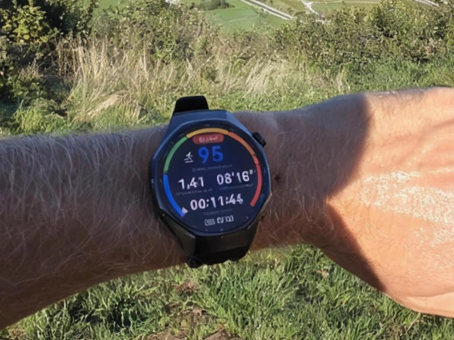Steady pacing transforms long runs from stressful challenges into predictable, manageable experiences. When your pace matches your fitness level and your goals, you conserve energy and avoid the discouragement that comes from early exhaustion. Most everyday runners discover that pacing is not about speed but about control—learning when to hold back, when to settle in, and when to gently push forward. It’s a skill that connects directly to improving overall endurance and even learning how to get better at running in a sustainable, injury-free way. In this article, we will explore practical pacing strategies that fit naturally into daily training routines.

The Fundamentals of Effective Pacing
Understanding Conversational Pace
Conversational pace is one of the simplest and most reliable ways to judge whether you’re running at a sustainable speed. If you can speak in short sentences without gasping, you’re likely running at an aerobic level that supports longer distances. Many runners find this pace becomes the backbone of their weekend long runs because it encourages comfort over intensity. When you maintain this effort level, your body learns to use oxygen efficiently, building endurance quietly in the background. Over time, this easy rhythm helps set the foundation for stronger pacing control in both casual and more structured sessions.
The Dangers of Starting Too Fast
Beginning a run too quickly is a classic mistake, especially when excitement or fresh legs override patience. Your heart rate spikes early, forcing your body into an unsustainable effort zone that drains energy faster than most realize. Once fatigue sets in, even slowing down may not fully recover your rhythm, leading to a mentally challenging and physically uncomfortable run. The early rush may also cause you to shorten your stride or tighten your posture later, creating unnecessary strain. Starting gently gives your muscles, breathing, and circulation time to align naturally, allowing the rest of your run to unfold more smoothly.
Essential Tools for Pace Management
Using GPS Watches and Heart Rate Monitors
Technology can simplify pacing by giving you real-time feedback during training. A GPS watch can show your pace, distance, and heart rate at a glance, making it easier to correct your speed before fatigue builds. For example, some Huawei Watch models offer route guidance and heart rate zone monitoring, helping runners stay on track during long efforts. Features like these support consistent pacing by providing gentle reminders when your intensity drifts too high or too low. With this kind of assistance, you can focus more on how your body feels while still staying informed and confident about your overall effort.

The Low-Tech Method: Perceived Exertion
For runners who prefer a simple approach, perceived exertion offers a surprisingly accurate pacing guide. You focus on how hard your body feels like it’s working, using sensations like breathing depth, muscle tension, and overall comfort. This technique builds self-awareness, allowing you to adjust instantly even without data. Over time, many runners discover that perceived effort becomes more reliable than numbers because it adapts to real-world conditions like fatigue or stress. Trusting your internal cues helps you stay steady, especially on long runs where comfort and consistency matter most.
Proven Pacing Strategies for Long Runs
Negative Splits: How to Finish Strong
Running the second half of your long run slightly faster than the first teaches restraint, control, and momentum. You begin at an easy pace, allowing your body to warm up naturally without burning energy too early. Once settled, you gradually increase your rhythm, giving yourself a sense of progress instead of pressure. This approach helps you finish with strength and confidence, avoiding the mental slump that often comes with fading near the end. Many runners find that negative splits also boost motivation, turning long runs into smooth, satisfying experiences.
The Run-Walk Method for Consistent Pacing
The run-walk method breaks long distances into manageable sections, making pacing more accessible for runners of all skill levels. You alternate between set intervals of running and walking, allowing your body to recover without fully stopping the workout. This rhythm reduces fatigue buildup and helps maintain a steady overall pace, even toward the later miles. Many everyday runners use this method to gradually extend their long-run distance without feeling overwhelmed. With repetition, your walk breaks naturally shorten, and your running segments become more sustainable.
Advanced Pacing Techniques
Pacing for Different Terrain and Hills
Terrain affects pacing more than most runners realize, especially during long efforts. Uphills require shorter, lighter steps and a calmer breath pattern to avoid spiking your heart rate too early. Downhills, while easier mechanically, demand steady posture and controlled speed to protect your joints. Learning to adjust your effort rather than chasing a strict pace makes terrain variation far less intimidating. Over time, adapting to these shifts builds resilience that carries into flatter routes too. With practice, hills become a pacing skill rather than an obstacle.
Adjusting Pace for Weather Conditions
Weather plays a large role in how sustainable a pace feels on any given day. Heat increases your heart rate and dehydration risk, making it necessary to slow down even if your legs feel capable. Cold conditions require a longer warm-up and gentle pacing until your muscles loosen fully. Wind can force you to shorten your stride and focus on efficiency rather than speed. Learning to respect these external factors helps protect your energy and reduce frustration. A flexible mindset ultimately leads to more enjoyable and successful long runs.
Conclusion
Mastering pacing is less about strict rules and more about building awareness, patience, and consistency. Long runs become more rewarding when you balance effort with comfort, listen to your body, and choose strategies that fit your everyday life. With practice, pacing transforms from something you think about to something that comes naturally. As you apply these techniques, you’ll notice smoother runs, stronger finishes, and growing confidence in your abilities. Becoming calm and intentional with your pace is the key to unlocking your long-distance potential.
Copyright © 2023 infomorespace.com. All rights reserved.